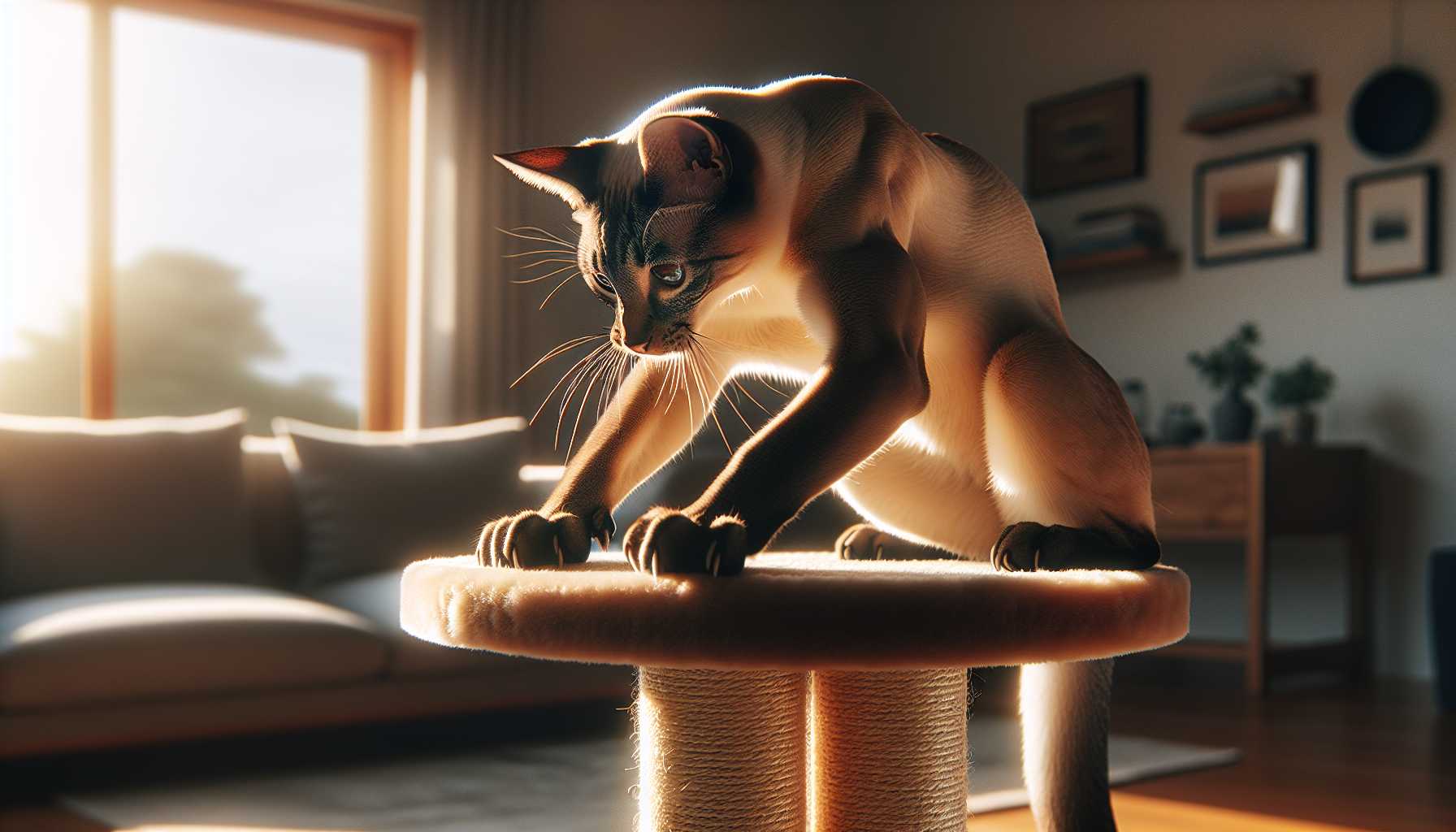Why Do Cats Scratch Furniture? Natural Behavior Guide

Unraveling Why Cats Scratch Furniture: A Comprehensive Guide on Natural Feline Behavior
Discovering your precious cat fiercely clawing at your brand-new couch might raise your stress levels. But rest assured – you are not the only one! Let's delve deep into the reasons behind this seemingly destructive tendency of our feline companions.
Scratching – A Natural Instinct Hardwired into Cats
Our feline friends do not plot to disrupt your routine by scratching your possessions. It's an ingrained natural behavior! In nature, cats scratch trees and other sturdy surfaces as a means of asserting their authority over an area. Consider it similar to them leaving a post-it note that humorously reads "Owned by Cat!"
Understand the Physical Rewards Your Cat Reaps from Scratching
Your cat isn't behaving out of spite – there are substantial health benefits linked to scratching: - It facilitates the shedding of old claw sheaths - It allows cats to stretch their muscles - It helps keep claws in peak condition - It's an excellent form of exercise
Territorial Stamp: A Unique Feline Signature
Here’s an intriguing fact: Each time your cat scratches, it establishes the area with both visual and scent markings. Cats' paws contain special glands that secrete pheromones. That shredded armchair you are despairing? It's your cat's non-verbal declaration of "This is my domain!"
Detecting the Signs Indicating Your Cat Needs an Alternative Scratching Space
Be vigilant for these signs: - Increase in frequency of furniture scratching - Stretching against vertical objects - Clawing at the carpets - Scratching bouts often seen in the morning or after snoozes.
Methods to Safeguard Your Furniture
Take a deep breath! Here are some effective strategies: 1. Provision of multiple scratching posts 2. Adhere double-sided tape on furniture to deter scratching 3. Position scratching posts near favored scratching areas 4. Experiment with varieties of scratching surfaces
Successful Training Strategies for Your Feline
Bear in mind, patience is crucial! Consider the following tips: - Commend positive scratching behavior - Softly guide their paws towards acceptable scratching surfaces - Refrain from reprimanding scratching - Make authorized scratching areas alluring.
Recognizing When There’s a Need for Professional Assistance
At times, professional intervention might be necessary, and it's absolutely fine! You should consider contacting a feline behaviorist if: - Scratching becomes incessant - Your cat exhibits signs of anxiety - Previous corrective steps have been unsuccessful - The presence of multiple cats is leading to territorial disputes